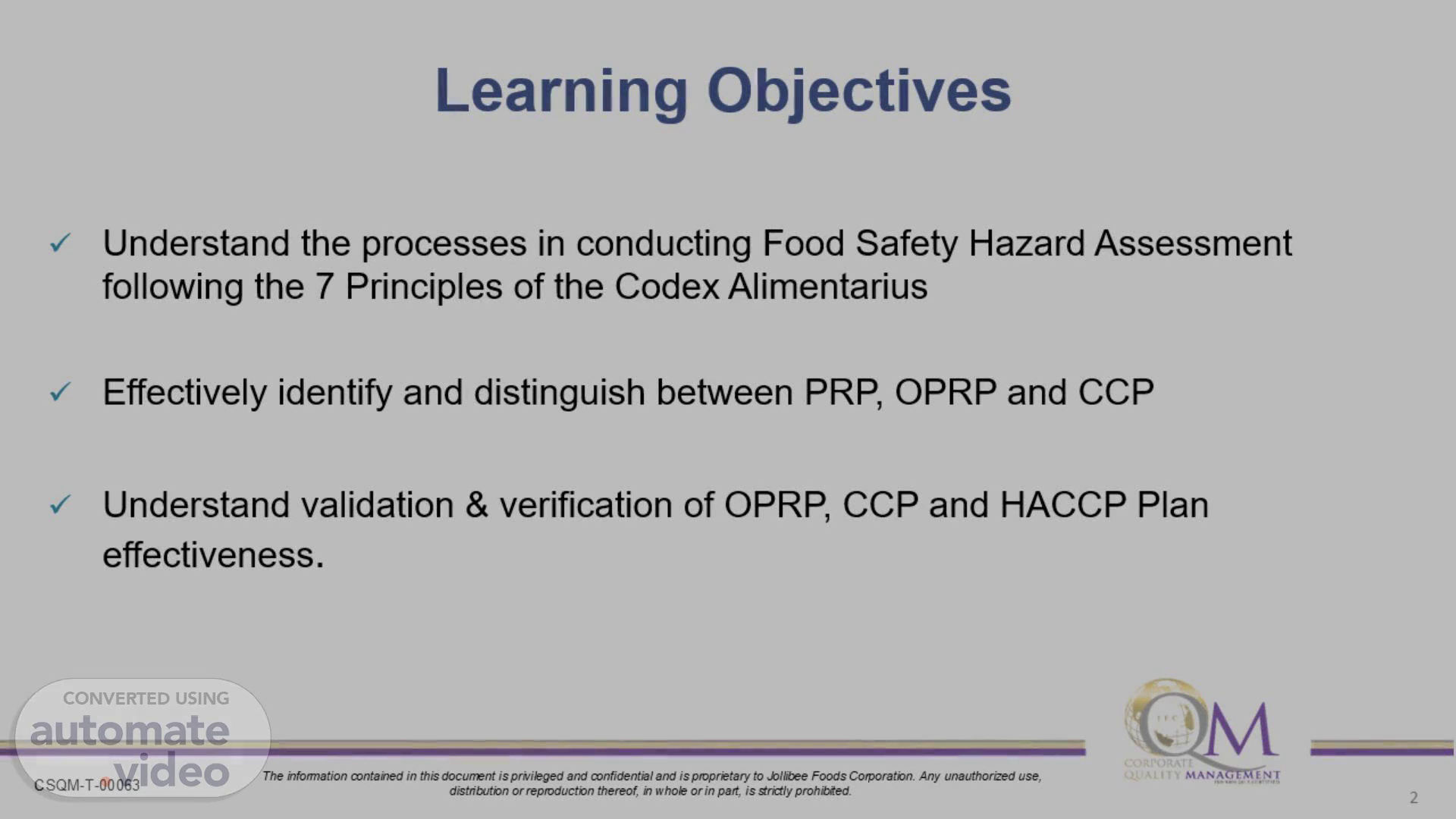Scene 1 (0s)
[Virtual Presenter] At the end of this training, the participants are expected to: This module focuses on raising awareness of the HACCP Standard and related documentation and not diving deeply into how to document the whole HACCP System because it requires detailed workshop for the Documentation Training. The primary goal is to equip our IQAs with the necessary guidance for reviewing HACCP documentation and assessing the effectiveness of each vendor’s or commissary’s haccp system implementation..
Scene 2 (39s)
INTRODUCTION.
Scene 3 (45s)
[Audio] HACCP stands for…. What HACCP is & How to Implement it - Sesotec Food Safety.
Scene 4 (54s)
[Audio] 1950s.. 1963… Codex Alimentarius is a collection of standards, guidelines, and codes of practice adopted by the Codex Alimentarius Commission. NASA partnered with the Pillsbury Company to create a new, systematic approach to quality control. Now known as Hazard Analysis and Critical Control Points (HACCP). 1980s.. The method has become an industry standard that benefits consumers worldwide by keeping food free from a wide range of potential significant hazards..
Scene 5 (1m 32s)
[Audio] Please note that HACCP is a preventive approach to food safety, science-based, and also risk-based..
Scene 6 (1m 46s)
[image] world Health Organization CODEX ALIMENTARIUS GENERAL PRINCIPLES OF FOOD HYGIENE (cxc 1-1969).
Scene 7 (1m 57s)
[Audio] Globally, there has been an increasing demand… Population in the west is becoming more vulnerable, and infants are exposed to processed food earlier Eating / buying habits are changing: consumers want food low in sugar, preservatives, nitrates, chilled minimally processed Novel foods – foods or food ingredients that are not yet consumed on a wide basis by any population or by a proposed target population / non-traditional (example: chia seeds and other GMOs, extracts not common, insects).
Scene 8 (2m 34s)
[Audio] HACCP is also important in preventing foodborne disease outbreak.
Scene 9 (3m 0s)
'Poisoned' Candy Sickens Nearly 2,000 People in the Philippines By News Desk on July 14, 2015.
Scene 10 (3m 30s)
Although the main goal of HACCP is food protection, there are other benefits acquired through HACCP implementation, such as: Increase customer confidence (provides market protection) Reduce costs through reduction of product losses and rework reduced risks of recalls and product withdrawals, reduced insurance and business liability protection costs reduced regulatory involvement does not depend heavily on end product testing.
